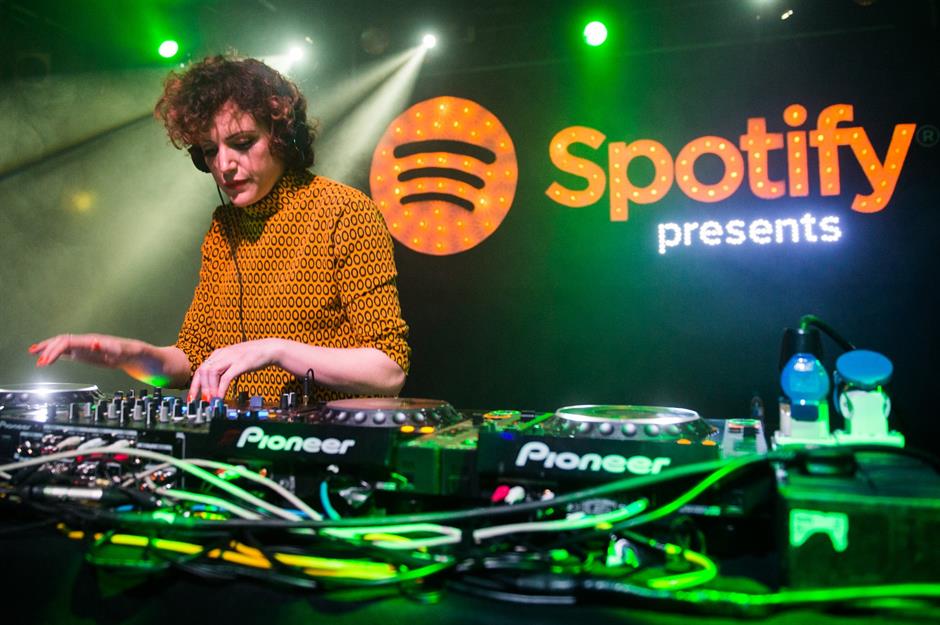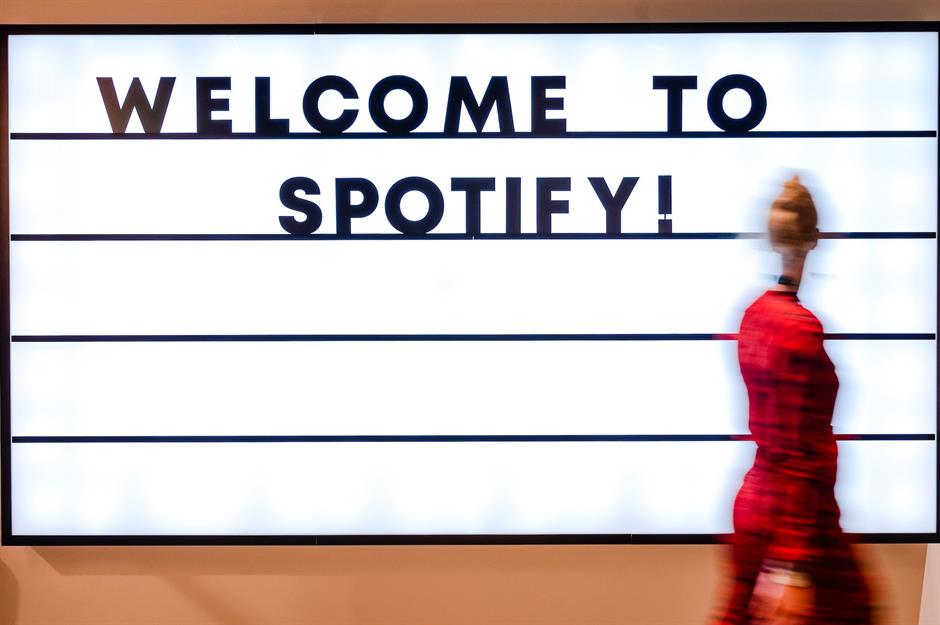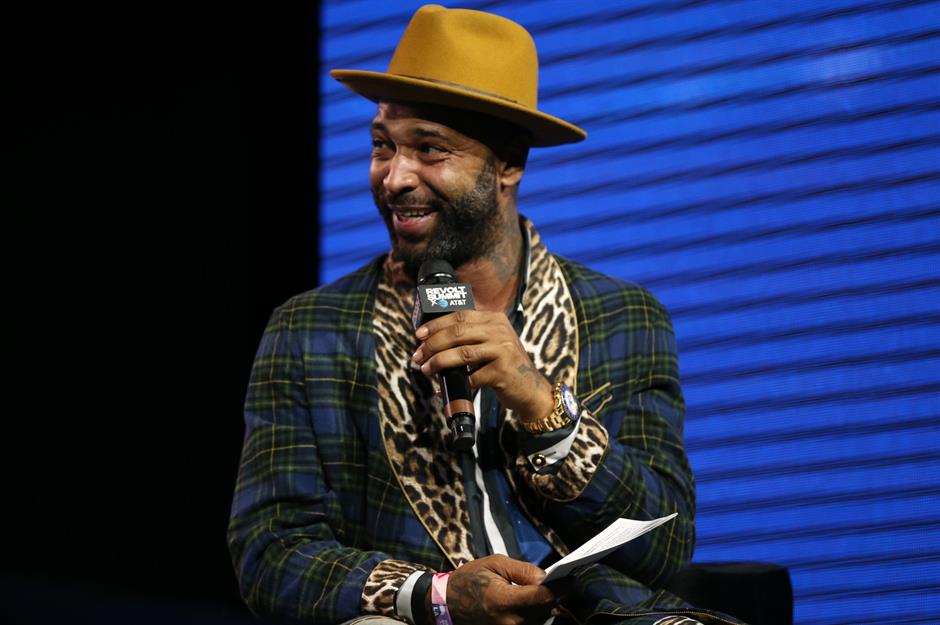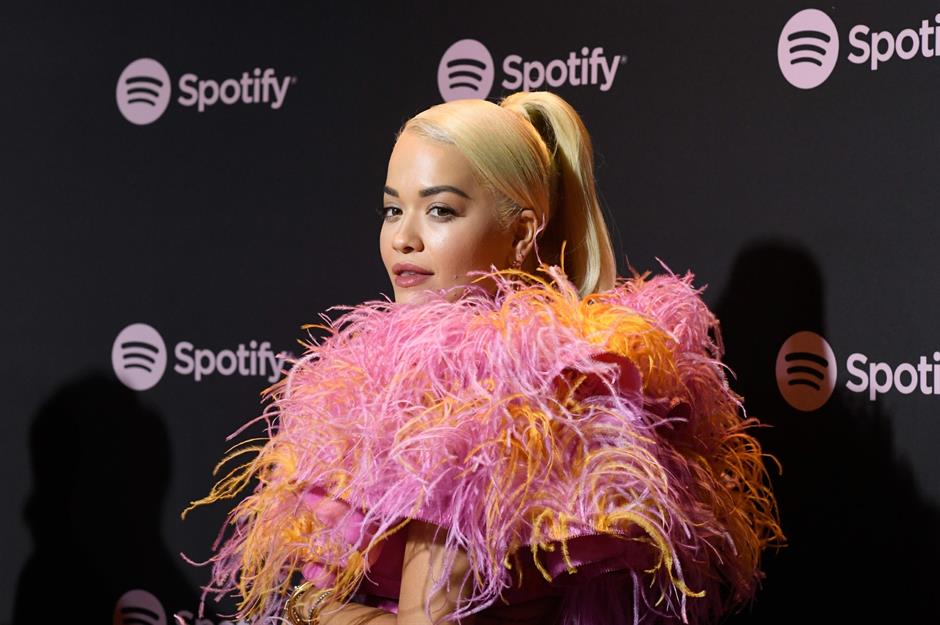Spotify conquered the music industry, but still can't make a profit
The company that turned the music world on its head

In the early 2000s, the record industry was being crippled by piracy, as illegal streaming sites made it easy for people to simply download a song, album or movie for free. But in 2006, Spotify launched their ground-breaking – and legal – streaming service. Now worth a projected $28 billion (£22.5bn) and boasting over 130 million paid subscribers and over 285 million monthly active users, how did Spotify do it? And why is it still failing to make an annual profit? Click or scroll through to find out about Spotify's story.
Humble beginnings in Sweden
.jpg)
It all started out in a quiet corner of Scandinavia. Spotify was founded as a small start-up in Stockholm, Sweden by Daniel Ek and Martin Lorentzon in an attempt to counteract the growing piracy problems the music industry faced from the likes of Napster, The Pirate Bay and Limewire. Ek had dabbled in music but was a programmer who had already hit millionaire status by his 20s, having sold several technology companies. Lorentzon had bought one of these companies and the two became close friends.
Spotify officially launches

Ek and Lorentzon wanted to offer a legal streaming service – one which actually paid artists for their music – but their model allowed listeners to choose whether or not they paid for the music. After two years of development, Spotify was finally launched on 7 October 2008. Initially the service was invite-only and limited to Scandinavia, the UK, France and Spain. Spotify pleaded with record companies to open up their catalogues so they could offer their listeners as many different types of music as possible, legally, through the platform.
Most streamed tracks in 2008
.jpg)
In the first month of operation, Coldplay’s Viva La Vida became the most streamed track on the fledgling service. After the first year, Human by The Killers then took the top spot as the most streamed track of 2008. At the time, the site was in its infancy and no-one could’ve envisioned that 10 years later the site would be a compilation of over 2,000 music genres and more than 4 billion playlists.
First-year losses
.jpg)
As with any new start-up, it takes time to build a winning formula. New companies usually take a financial hit in the first year and in 2008, Spotify reported losses of $4.4 million (£3.37m). This loss isn't too surprising as in the beginning most users were content with using the free version of the service. But the founders were already starting to entice users to subscribe to the paid premium package, where tracks wouldn't be interrupted by adverts as they were on the free model.
Advertisers jump in

As Spotify was managing to draw in users, advertisers came flocking as they sought to reach this new music audience that they had often lost to pirate streaming. In 2008 advertising was bringing in around $2,926 (£2.2k), but in the space of a year it leapt to an incredible $6 million (£4.5m).
New deals and growth
.jpg)
In July 2009, Spotify announced a $2 million (£1.5m) deal with sales, marketing and distribution company the Independent Online Distribution Alliance (IODA). The deal brought in over two million new tracks by independent artists, which further broadened Spotify's musical repertoire. At this time, Spotify was already being valued at $242 million (£185.8m).
Making waves
.jpg)
Spotify was not only making ripples in the music industry, but also in the world of tech. In 2009, the start-up gratefully received the public backing and support of Facebook founder and kingpin Mark Zuckerberg, who simply said: “Spotify is good” in a Facebook status. At the time one of Facebook's biggest investors Li Ka-shing had also just bought a stake in Spotify.
Confident for the future
.jpg)
In 2010 Spotify founder Daniel Ek was interviewed by British newspaper The Telegraph and said that: "The only way to solve the problem (of piracy) was to create a service that was better than piracy and at the same time compensates the music industry." In the same interview Ek also successfully predicted the future when he said that Spotify would one day be worth "tens of billions"...
More international funding
.jpg)
In 2010 Spotify received $13.2 million (£10.1m) in funding from the San Francisco-based venture capital firm Founders Firm. The streaming service also announced two different account types: Unlimited and Premium. The Unlimited option no longer exists, but it offered listeners ad-free listening on a desktop or laptop, while the more expensive Premium account – the only paid version now available – offered ad-free listening on all devices. Subscribers could also download music to listen to offline, and these features put Spotify in good stead to conquer America.
Spotify goes to America
.jpg)
Spotify finally launched its streaming service across the USA on 14 July 2011. The service received funding to the tune of $100 million (£76.8m) to launch the US site and was valued at $1 billion (£768m) by the end of the year. Hiring former Napster co-founder Sean Parker to help to secure major record label deals was a massive coup, and the ex-President of Facebook reportedly invested $15 million (£12m) into the company, giving him a 5% stake in the business.
When Facebook met Spotify
.jpg)
In 2011 Facebook and Spotify finally cemented their relationship, collaborating on a new tool that allowed users to set up listening groups on the social media platform, provided they were in a country where Spotify was up and running. Facebook users could suddenly listen to the same music together with their friends, even if they were on opposite sides of the world.
Millions' milestones
.jpg)
In the months after it hit the US market, Spotify reached the landmark of one million paying users. By 2012, this number had grown to five million, as well as the 10 million standard non-paying users. Despite the boom in listeners, Spotify ended 2011 with reported losses in the region of $60 million (£46m) and revenues of $244 million (£187.3m).
Rising revenues

Five years after launch, Spotify had over 20 million songs available to its growing base of 24 million music-loving users across 32 territories. It also saw a whopping 74% rise in revenue to $788.7 million (£592.9m) from 2012 to 2013. But all wasn't as rosy as it seemed as operating losses also rose by 16.4%, from $90 million (£67m) at the end of 2012 to $106 million (£79.7m) by the close of 2013. Spotify was quickly becoming a global phenomenon, but that international rollout came at a price to profits.
Swift condemnation
.jpg)
The service didn't have too much trouble finding subscribers, but it wasn't having it so easy with the music industry itself. Taylor Swift cancelled her contract with Spotify in 2014, claiming payments from the streaming service were too low. Music artist Beck also lambasted Spotify by saying the royalties were “not even enough to pay the musicians playing with me or the people working on the discs. It's not working. Something’s going to have to give". Swift, however, did a U-turn and re-signed with Spotify just three years later, around the time streams from the service started to be counted in determining chart positions.
Radiohead quits Spotify too
.jpg)
British band Radiohead joined Swift and Beck in speaking out against Spotify, and members blasted the streaming service for meagre payments or royalties to new artists and quitted the service in 2013. Since then the band's music has made a gradual return to the platfofrm, although frontman Thom Yorke periodically continues to criticise it. Yorke likened Spotify to "the last desperate fart of a dying corpse" in perhaps his most memorable denunciation of the service, which was made in an interview for the Mexican entertainment website Sopitas back in 2013.
Daniel Ek makes the case for the defence
.jpg)
In response to the criticism from artists about low royalties, Daniel Ek came out to defend Spotify. He said that since 2008, Spotify had paid out over $2 billion (£1.5bn) to music rights holders and that it was better than the other options available at the time. Ek also said that "Piracy doesn't pay artists a penny – nothing, zilch, zero." Yet, Spotify was paying just a $0.037 (£0.028) per listen to rights holders at the time.
Prince and Neil Young remove their music
.jpg)
By 2015, amid ongoing concerns from artists, both Prince and Neil Young removed their entire catalogues from Spotify. Young removed his music because he believed the sound on the website was sub-quality and was working on his own rival service. Financially, things were also still a little iffy, with Spotify reporting increasing losses of $197 million (£148m) in 2015, despite record revenues of $2.2 billion (£1.65bn). The same year also saw the birth of rival Tidal, an artist-owned streaming service founded by Jay-Z, which, although strongly supported by the artist community, has failed to reach the masses in the way that Spotify has.
A year of acquisitions
.jpg)
Spotify spent 2016 focusing on acquisitions, which meant more spending for the already loss-making company. It acquired the Dublin-based music start-ups Soundwave and Cord Project, the San Francisco-based start-up Crowd Album, a cloud-based platform called Preact, and an audio detection technology start-up from the UK called Sonalytic. Unsurprisingly, Spotify saw losses more than double to $581 million (£437m), but revenue had grown to $3 billion (£2.3bn).
Major record labels finally on board
.jpg)
Stock market debut
.jpg)
After years of flirting with the idea of going public, Spotify finally made its stock market debut in April 2018. Instead of going the standard route of creating a traditional IPO, Spotify decided to purchase a direct listing. The share price opened at $165.90 (£125) with a reference price of $132 (£99). Spotify reached an all-time high in terms of its market capital on July 6 later that year, when the share price hit $198.99 (£160).
The home of podcasts

By 2019, Spotify had become the world's second biggest podcast provider, with over 500,000 titles for listeners to tune in to. On average podcast-lovers spend twice as much time on the streaming platform than those who use it exclusively for music. Listener numbers grew by 50% over 2019, with The Joe Budden Podcast (pictured) claiming the title of the most streamed Spotify Original podcast of 2019 with over 340 episodes of the show. Based on industry data, Spotify predicts that 20% of all listening in the future will be non-music content. During the coronavirus lockdown Spotify has seen weekly Harry Potter and the Philosopher's Stone readings courtesy of different celebrities, including Daniel Radcliffe and Stephen Fry, feature on the platform.
Most streamed songs of all time
.jpg)
Podcasts may be gaining traction, but music is still very much the service's most popular content. The most streamed song in the history of Spotify is Shape of You by Ed Sheeran, which was released in January 2017. It has amassed over 2.4 billion streams, and remains the only song to have hit two billion listens. With 1.9 billion streams rockstar by Post Malone feat. 21 Savage sits in second place, having just surpassed One Dance by Drake (with WizKid and Kyla), which has been streamed over 1.8 billion times.
Drake stole the decade
.jpg)
The most streamed artist on Spotify in 2019 was American rapper Post Malone, with over 6.5 billion streams all over the world, but Drake stole the decade with a total of 28 billion streams in the last 10 years. This is perhaps unsurprising given the sheer quantity of songs that the rapper has released since 2010, and his 179 songs roughly equate to churning out an 18-song album every year, which is a feat artists rarely attempt, let alone pull off.
How much is Spotify worth?
.jpg)
It has been reported that Spotify is currently worth in the region of $28 billion (£22.5bn), although at one point in mid-2018 it was worth over $33 billion (£25bn). Ek's 2010 prediction of the company being worth "tens of billions" had finally come to fruition...
Owners’ net worth
.jpg)
At the time of writing, Spotify co-founder Daniel Ek, now 37, is believed to have a net worth of approximately $2.4 billion (£1.8bn). His long-time business partner Martin Lorentzon, 51, has a reported net worth of $3.3 billion (£2.6bn) as of May 2020. Despite being co-founders, Ek is much more in the spotlight. In one of Ek's latest encounters with the press he pointed out that Spotify's membership numbers are still on the rise, but is that enough to keep the streaming service going?
200 million monthly users but still no annual profit
.jpg)
Earlier this year Spotify confirmed that it has over 286 million monthly active users worldwide. And in its latest quarterly earnings report, Spotify said it has 130 million paying subscribers, making it the global leader in terms of paying customers, ahead of Apple Music's 60 million, and Amazon Music's 55 million. But Spotify has faced a lot of difficulty with its finances in the past and it's safe to say that rival companies Apple and Amazon have plenty of money to keep their music streaming services' books balanced...
Over a decade later, Spotify makes a profit...

The platform's decade-long lack of profit was largely down to Spotify being at the mercy of record companies. While it has bettered relationships with artists, paying 79 cents (59p) per dollar made to musicians in 2017 – more than Netflix's licensing agreements of 66 cents (50p) – it took a long time for Spotify to come to an agreement where all parties were happy. Over 10 years after its launch however, Spotify was finally able to report a profit in the early 2019. Despite having seemingly overcome its major hurdles, sadly Spotify making profit was not something that was made to last...
Now read the story of Facebook's 15-year timeline and the staggering numbers behind its success
But it's not made to last

Overall Spotify made a loss by the end of 2019, and although operating losses were down to $18.4 million (£14.8m), which is far better than the $51 million (£41m) loss made in the previous year, it was still a hefty loss. The first quarter of 2020 looked promising for the company and revenue was better than expected, but this upward trend could be in jeopardy...
Lockdown leads to less streaming?

While the company's first quarter performance was better than expected, ad-supported revenues have dropped as industries such as travel and hospitality are pulling their ads from media outlets given that they are struggling in the pandemic climate. Listening habits have also changed; in the US two analytics companies reported that the use of music-streaming services like Spotify had fallen by 8%, while the UK has seen people tuning into radio stations which have seen their listener numbers increase. It's been suggested that music streaming figures may have dropped as people are no longer commuting, although Spotify has said that slumps in badly hit countries such as Italy and Spain made "a meaningful recovery" in April, according to Reuters.
Supporting artists through the pandemic

With musicians unable to perform or even record music in most cases, there is a sudden shortfall in cash flow for artists who depend on music as their livelihood. Spotify is trying to help by allowing its users to pay musicians directly through the streaming site. Artists can highlight on their profiles if they are receiving 'tips', or if they want to encourage fans to donate to a certain charity. American DJ Marshmello was one of the first to get involved, and he is encouraging listeners to give money to the MusiCares COVID-19 Relief Fund, which supports artists who find themselves out of work.
What's next for Spotify?
.jpg)
The COVID-19 outbreak has led to great uncertainty for most businesses, and Spotify has adjusted its 2020 financial projections accordingly. Where the company had initially anticipated revenues of $8.8 billion to $9.2 billion (£7.1bn-£7.4bn) for this year, it has now told shareholders that somewhere between $8.3 billion and $8.7 billion (£6.7bn-£7bn) is far more realistic. Operating losses are also predicted to fall somewhere between $49 million and $103 million (£39m to £83m) in 2020. Despite its huge success as the world's go-to music streaming service, it remains a mystery whether Spotify will ever become a consistently profitable business.
Now read about how the world bounced back from the last global pandemic
Comments
Be the first to comment
Do you want to comment on this article? You need to be signed in for this feature